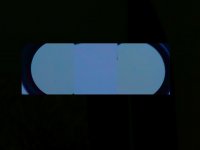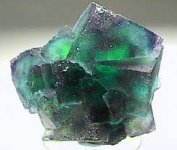- Color perception of mixed frequencies is not in 1:1 relationship with pure spectral values (see below).
- Each human has a different spectral sensitivity, which were averaged when 'standard' sensitivity functions were first derived.
- Source lighting is not standardized or controlled except in a laboratory.
- Photographic results vary with the algorithms used in different cameras.
- (etc.)
Gijs' and Allbinos' spectra show isolated (i.e., pure) frequency responses (in 5 nm bins), and they also differ.
Photos show pictures of many frequencies integrated by camera algorithms.
Screen displays render colors differently (mine happens to be an Apple Cinema).
Binoculars couple to observer's eyes, all of which are different, and result in different perceptions.
I don't happen to see green in any of the photos shown above. That doesn't mean that I wouldn't see a green bias if I were to look through different Zeiss/Swaro binoculars — or it might be a blue bias, or reddish. That also doesn't mean that you would see the same color bias as I do when looking through identical binoculars, and all bets are off if we're looking through different binoculars.
Then, of course, we haven't even considered 'powers of suggestion,' and 'perceptual adaptation' (i.e., color constancy).
My conclusion is that it's a good thing there's more than one brand to choose from. :smoke:
Ed









